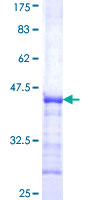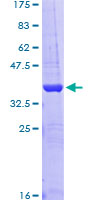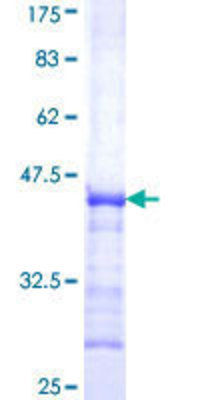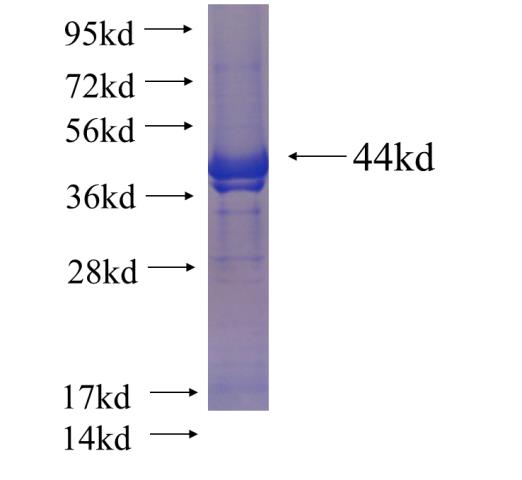SETDB1
| Gene Symbol | SETDB1 |
|---|---|
| Entrez Gene | 9869 |
| Alt Symbol | ESET, H3-K9-HMTase4, KG1T, KMT1E, TDRD21 |
| Species | Human |
| Gene Type | protein-coding |
| Description | SET domain, bifurcated 1 |
| Other Description | ERG-associated protein with SET domain|ERG-associated protein with a SET domain, ESET|H3-K9-HMTase 4|histone H3-K9 methyltransferase 4|histone-lysine N-methyltransferase SETDB1|histone-lysine N-methyltransferase, H3lysine-9 specific 4|lysine N-methyltransferase 1E|tudor domain containing 21 |
| Swissprots | Q96GM9 Q5SZE0 A6NEW2 Q5SZD9 Q15047 Q5SZE7 Q5SZD8 |
| Accessions | CBJ06473 CBJ06474 EAW53503 EAW53504 EAW53505 EAW53506 EAW53507 EAW53508 Q15047 AI582266 AK095075 AK302461 BAG63752 AK308335 BC009362 AAH09362 BC028671 AAH28671 D31891 BAA06689 DA418593 DB062762 XM_005245641 XP_005245698 NM_001145415 NP_001138887 NM_001243491 NP_001230420 NM_012432 NP_036564 |
| Function | Histone methyltransferase that specifically trimethylates 'Lys-9' of histone H3. H3 'Lys-9' trimethylation represents a specific tag for epigenetic transcriptional repression by recruiting HP1 (CBX1, CBX3 and/or CBX5) proteins to methylated histones. Mainly functions in euchromatin regions, thereby playing a central role in the silencing of euchromatic genes. H3 'Lys-9' trimethylation is coordinated with DNA methylation. Probably forms a complex with MBD1 and ATF7IP that represses transcription and couples DNA methylation and histone 'Lys-9' trimethylation. Its activity is dependent on MBD1 and is heritably maintained through DNA replication by being recruited by CAF-1. SETDB1 is targeted to histone H3 by TRIM28/TIF1B, a factor recruited by KRAB zinc-finger proteins. {ECO:0000269|PubMed:12869583, ECO:0000269|PubMed:14536086, ECO:0000269|PubMed:15327775, ECO:0000269|PubMed:17952062}. |
| Subcellular Location | Nucleus. Chromosome. Note=Associated with non-pericentromeric regions of chromatin. Excluded from nucleoli and islands of condensed chromatin. |
| Tissue Specificity | Widely expressed. High expression in testis. |
| Top Pathways | Signaling pathways regulating pluripotency of stem cells, Lysine degradation |
Human KMT1E / SETDB1 protein fragment - ab153023 from Abcam
|
||||||||||
Human KMT1E / SETDB1 protein fragment - ab153024 from Abcam
|
||||||||||
ESET / SETDB1 Antibody Blocking Peptide - LS-E456 from LifeSpan Bioscience
|
||||||||||
Recombinant Human SETDB1 Protein - H00009869-Q01 from Novus Biologicals
|
||||||||||
Recombinant Human SETDB1 Protein - H00009869-Q02 from Novus Biologicals
|
||||||||||
SETDB1-Antibody-C-term-Blocking-Peptide - BP1073b from Abgent, a WuXi AppTec company
|
||||||||||
SETDB1 - H00009869-Q01-10 from Acris Antibodies
|
||||||||||
SETDB1 - H00009869-Q01-25 from Acris Antibodies
|
||||||||||
SETDB1 - H00009869-Q02-10 from Acris Antibodies
|
||||||||||
SETDB1 - H00009869-Q02-25 from Acris Antibodies
|
||||||||||
SETDB1 fusion protein - Ag21644 from Proteintech Group
|
||||||||||
SETDB1 fusion protein - ag1725 from Proteintech Group
|
||||||||||
Recombinant SETDB1 protein - 31452 from ActiveMotif
|
||||||||||
Recombinant Human SETDB1, FLAG-tagged - SETDB1-70H from Creative Biomart
|
||||||||||
Recombinant Human Histone-lysine N-methyltransferase SETDB1(SETDB1) ,partial - CSB-YP619960HU CSB-EP619960HU CSB-BP619960HU CSB-MP619960HU from Cusabio
|
||||||||||
SETDB1 (transcript variant 2) - TP303647 from Acris Antibodies
|
||||||||||
SETDB1 (transcript variant 1) - TP326620 from Acris Antibodies
|
||||||||||
Histone H3, trimethyl, Peptide - MBS659152 from MyBioSource
|
||||||||||
SETDB1 Recombinant Protein Antigen - NBP1-84790PEP from Novus Biologicals
|
||||||||||
SETDB1-Antibody-N-term-Blocking-Peptide - BP1073a from Abgent, a WuXi AppTec company
|
||||||||||
SETDB1 Peptide, Human - M34GP14087H from Creative Peptides
|
||||||||||
Human SETDB1 protein - orb54306 from Biorbyt
|
||||||||||
Histone-lysine N-methyltransferase SETDB1 (SETDB1), partial, Recombinant Protein - MBS1423750 from MyBioSource
|
||||||||||
SETDB1, Recombinant Protein - MBS515672 from MyBioSource
|
||||||||||
SETDB1 Recombinant Protein (Human) (OPCA04793) - OPCA04793 from Aviva Systems Biology
|






